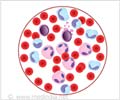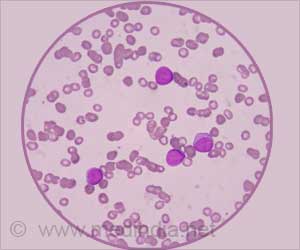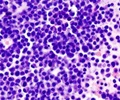Precision medicine tools reveal genetic mutations in acute myeloid leukemia, aiding in diagnosis and treatment development.
- Precision medicine identified two key chromosomal abnormalities in pediatric acute myeloid leukemia
- The study used umbilical cord samples to trace leukemia's origins back to fetal development
- Discovering the activation of the MNX1 gene opens new paths for understanding and treating leukemia
Backtracking NOM1::ETV6 fusion to neonatal pathogenesis of t(7;12) (q36;p13) infant AML
Go to source).
TOP INSIGHT
Did You Know?
Some cases of pediatric leukemia might have their roots in the womb, with umbilical cords holding the earliest clues to this childhood mystery!
Precision Medicine Unveils Unique Insights into Pediatric Leukemia
Researchers used precision medicine tools to analyse the tumor's entire genome. Unlike adult cancers, which contain thousands of mutations, this leukemia contained only two chromosomal abnormalities. 'Genome analysis enabled us to develop a personalized diagnostic tool to monitor the condition,' explains Xose S. Puente, Professor of Biochemistry at the University of Barcelona. Puente is a Professor of Biochemistry and Molecular Biology at the University of Oviedo.'But these findings generate new issues, such as when the tumor formed and in what order these mutations happened,' he emphasizes. These concerns are difficult to address since such a study requires blood samples from the newborn before diagnosis, which is unavailable in the great majority of cases. However, in this case, the presence of a frozen umbilical cord sample enabled researchers to segregate various populations of blood cells after birth and investigate whether any of the chromosomal changes detected in the tumor were present during foetal development.
Key Genetic Drivers and Mechanisms in Pediatric Leukemia
The study discovered a translocation between chromosomes 7 and 12 in certain haematopoietic stem cells in the umbilical cord. In contrast, the other chromosomal change, a trisomy of chromosome 19, was not present in the foetus but was discovered in all tumor cells, implying that it contributes to the aggressiveness of leukemia cells. 'These data are highly relevant for understanding the development of a devastating disease, and the existence of this umbilical cord sample was critical to being able to conduct a study that had previously been impossible in acute myeloid leukaemia,' adds Talia Velasco, researcher at the Josep Carreras Institute and the University of Barcelona and co-leader of the study.In addition to reconstructing the genomic alterations that the cells undergo to generate this leukaemia, the study discovered a previously unknown molecular mechanism that causes the activation of a gene called MNX1, which is frequently altered in this type of tumour. Knowledge of these changes is critical for creating cell and animal models that will help us understand disease evolution and create new treatments for these illnesses.
This research was made possible by the parents' collaboration and funding from the Ministry of Science, Innovation, and Universities, the European Research Council, the AECC Scientific Foundation, the Foundation Unoentrecienmil, the "La Caixa" Foundation, the Government of Catalonia, CIBERONC, and the III Health Institute.
- Backtracking NOM1::ETV6 fusion to neonatal pathogenesis of t(7;12) (q36;p13) infant AML - (https://pubmed.ncbi.nlm.nih.gov/38806630/)
Source-Medindia
 MEDINDIA
MEDINDIA





 Email
Email








